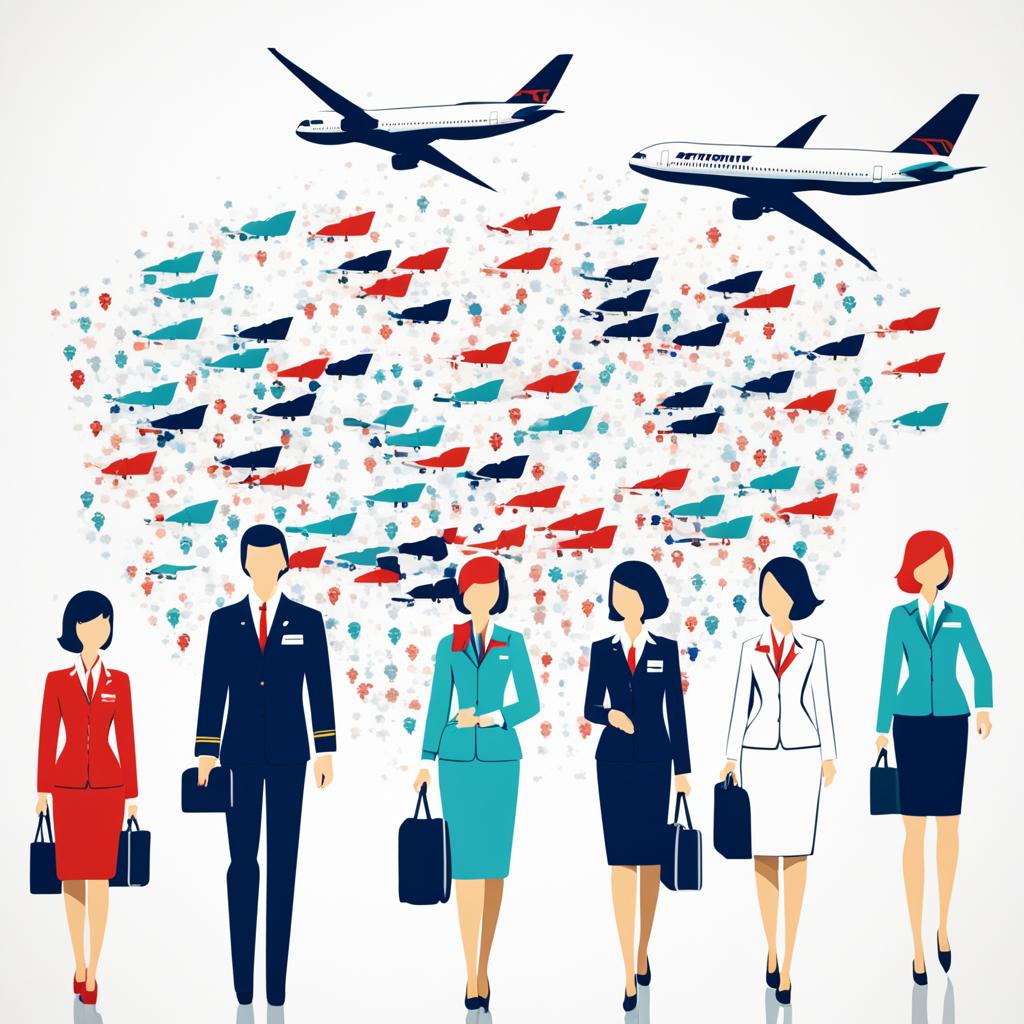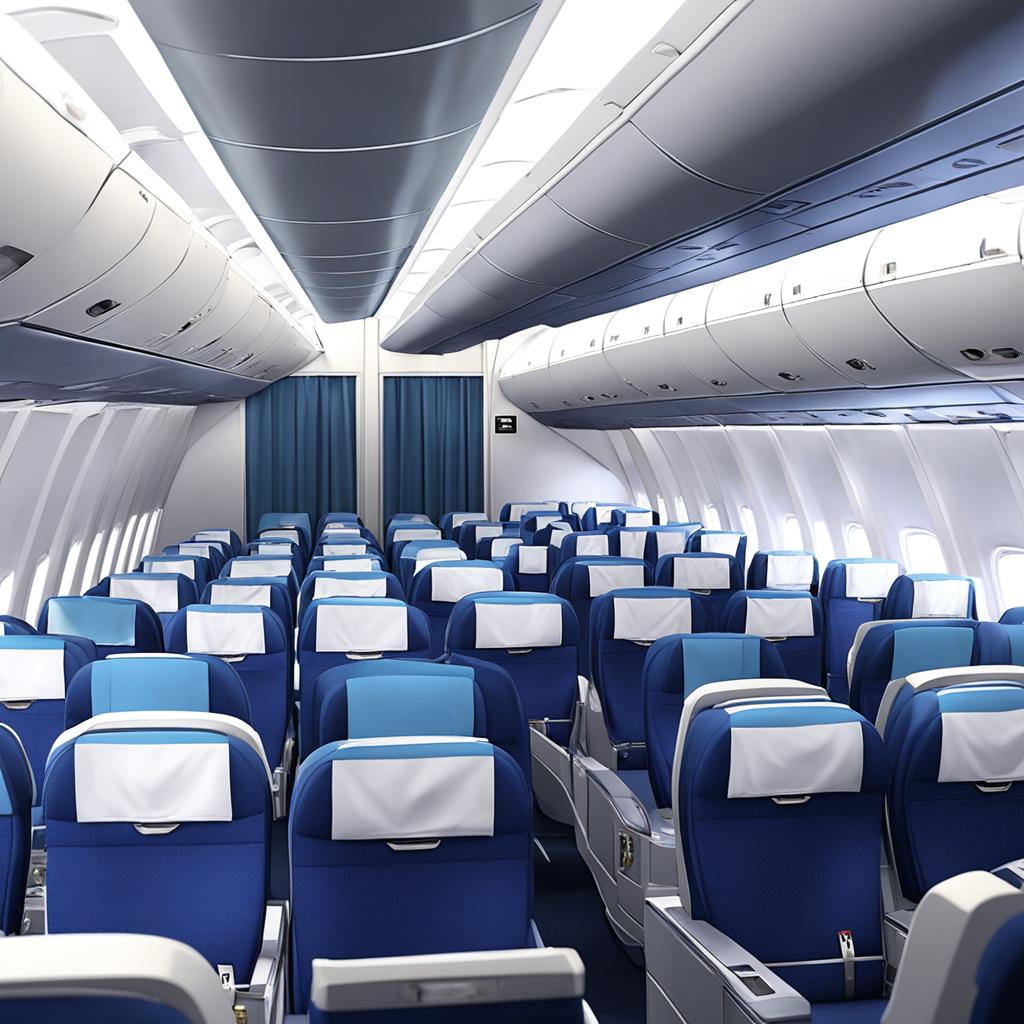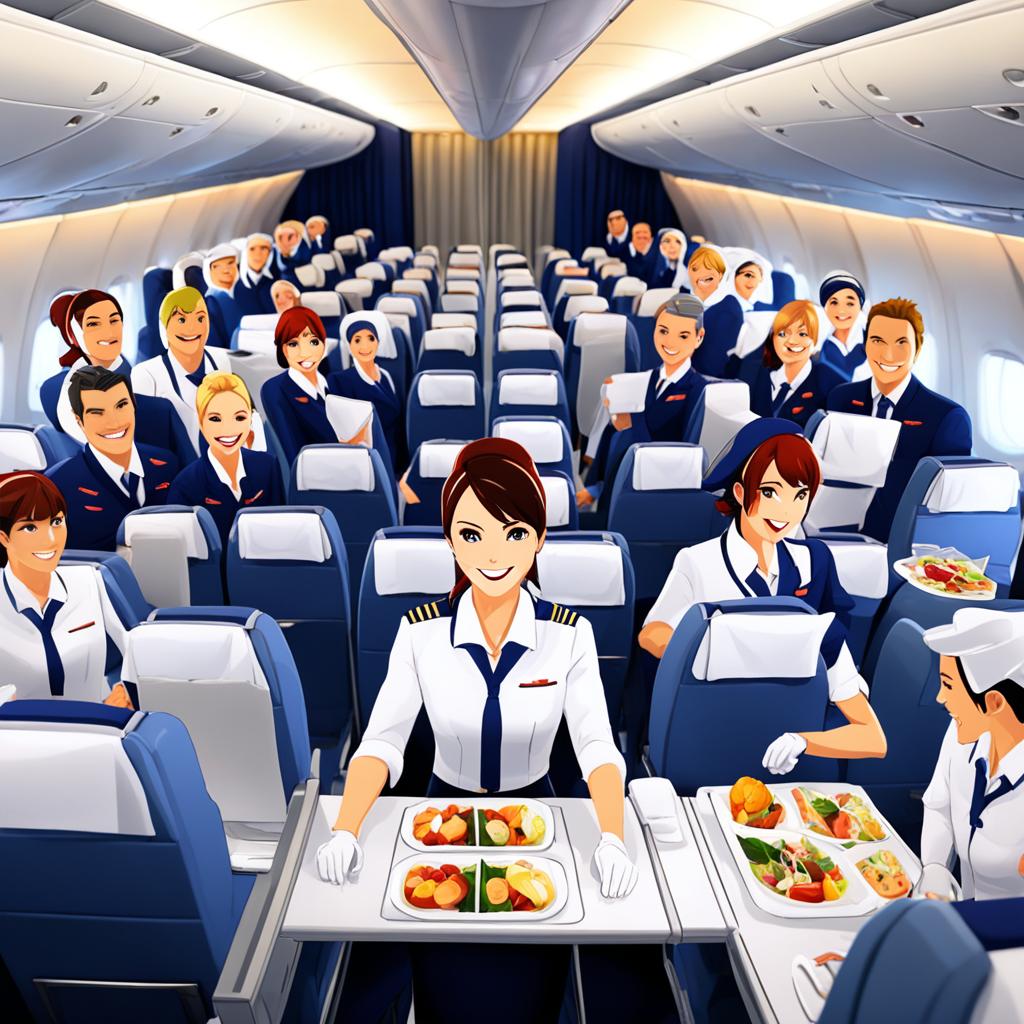Have you ever wondered how many flight attendants are on board a Boeing 777 aircraft? The answer might surprise you. The number of flight attendants on a 777 is not fixed and depends on various factors, including legal requirements and passenger safety. Let’s delve into the details and discover the intriguing truth behind cabin crew numbers.
Flight attendants play a crucial role in ensuring the safety and comfort of passengers during a flight. Their presence on board is more than just offering complimentary drinks and snacks. It is about providing assistance during emergencies, maintaining order, and following legal regulations.
FAA Requirements for Flight Attendants
The Federal Aviation Administration (FAA) enforces specific regulations for flight attendants to ensure passenger safety on commercial flights. These requirements include the flight attendant ratio, passenger-to-crew ratio, and provisions for emergency situations such as evacuating the aircraft through emergency exits.
According to FAA regulations, airlines must maintain a flight attendant ratio of at least one flight attendant per 50 passengers. This guideline helps guarantee that there are enough trained personnel on board to assist passengers during emergencies, ensuring their safety and well-being.
During takeoff and landing, flight attendants are strategically positioned near floor-level emergency exits to facilitate the efficient evacuation of passengers in case of an emergency. This placement ensures that flight attendants can swiftly guide passengers to safety and assist them in evacuating the aircraft.
Complying with these FAA requirements is crucial for airlines to maintain a high level of passenger safety and enhance overall emergency preparedness. By adhering to the flight attendant ratio and securing their positions near emergency exits, airlines can effectively manage emergency situations and prioritize the well-being of their passengers.
International Requirements and Variations

While the FAA regulations apply to flights within the United States, other countries may have slightly different requirements when it comes to flight attendant numbers. It’s essential to understand the international regulations and passenger-to-crew ratio before flying abroad.
For example, in Canada, the typical passenger-to-crew ratio is one flight attendant for every 40 carried passengers. This ratio ensures that there are enough trained personnel on board to assist passengers and maintain safety during the flight.
The International Civil Aviation Organization (ICAO) does not provide specific guidance on the exact number of flight attendants required per passenger. Instead, it refers to local state operators to determine flight attendant requirements. Therefore, the regulations can vary from one country to another.
When planning your international travel, it’s crucial to check the specific regulations of the country you are flying in. Understanding the international requirements for flight attendants will help ensure compliance and safety during your journey.
| Country | Passenger-to-Crew Ratio |
|---|---|
| United States | 1 flight attendant per 50 passengers (FAA regulations) |
| Canada | 1 flight attendant per 40 passengers |
| United Kingdom | 1 flight attendant per 50 passengers |
| Australia | 1 flight attendant per 36 passengers |
As shown in the table above, different countries have their own passenger-to-crew ratio for flight attendants. These variations highlight the importance of understanding and adhering to the specific regulations of the country you will be flying in.
Factors Influencing Flight Attendant Numbers
The number of flight attendants on a plane can be influenced by various factors. Flight length, aircraft size, airline policies, and customer service standards all play a role in determining the staffing levels on a flight.
Flight length: Longer flights require more flight attendants due to mandatory break requirements. These breaks ensure that the cabin crew remains well-rested and alert throughout the duration of the flight, promoting safety and efficient service.
Aircraft size: Larger planes typically have more emergency exits, which necessitate more flight attendants for effective assistance. The number of flight attendants is optimized to handle the passenger load and effectively execute safety procedures during an emergency situation.
Airline policies: Different airlines may have varying policies regarding staffing levels. Some airlines may choose to have higher staffing levels to enhance customer service and ensure a pleasant flying experience for passengers. These policies are often in line with the airline’s commitment to providing exceptional service and personalized attention to each traveler.
Customer service: The level of customer service provided by an airline can also impact the number of flight attendants on a flight. Airlines that prioritize customer satisfaction and strive to exceed passenger expectations may choose to have additional cabin crew members on board. This allows for more attentive and personalized service, ensuring that travelers feel valued and well-cared for during their journey.
By considering these factors, airlines can determine the appropriate number of flight attendants for each flight, balancing safety requirements, customer service goals, and operational efficiency.
| Aircraft Type | Seating Capacity | Flight Attendant Ratio |
|---|---|---|
| Boeing 737-800 | 162-189 | 1:50 |
| Airbus A320neo | 165-195 | 1:50 |
| Boeing 787-9 | 282 | 1:50 |
Flight Attendant Numbers on Specific Aircraft

When it comes to the number of flight attendants on specific aircraft, the seating capacity plays a crucial role. Different aircraft types have different seating capacities, which determine the required number of flight attendants on board. Let’s take a look at a few examples:
- Boeing 747-400: With a seating capacity of 416 to 524 passengers, the typical number of flight attendants would range from 9 to 11. This ensures that there is adequate crew coverage to attend to the needs of the passengers during the flight.
- Airbus A380: This impressive aircraft can accommodate up to 850 passengers. Due to its larger size, it requires a higher number of flight attendants. The minimum requirement for an Airbus A380 would be 17 flight attendants.
It’s important to note that these numbers represent the minimum requirements set by aviation authorities. However, airlines may choose to exceed these requirements for various reasons. They may prioritize passenger safety and comfort by having additional flight attendants on board. Additionally, airlines might consider factors such as longer flight durations, higher levels of customer service, and specific airline policies when determining the number of flight attendants for a particular aircraft.
In the diagram below, you can visualize the seating capacity and the corresponding number of flight attendants for the Boeing 747-400 and Airbus A380:
| Aircraft Type | Seating Capacity | Flight Attendant Ratio |
|---|---|---|
| Boeing 747-400 | 416 – 524 passengers | 9 – 11 flight attendants |
| Airbus A380 | 850 passengers | 17 flight attendants |
As you can see, the seating capacity of an aircraft directly influences the required number of flight attendants. This ensures that there are enough trained crew members on board to provide assistance, maintain a safe environment, and deliver the highest level of customer service to all passengers.
Gift Ideas for Flight Attendants

If you’re interested in giving gifts to flight attendants, there are several options that are sure to bring holiday cheer. Consider choosing gifts that are thoughtful and practical, such as chocolates and gift cards.
Chocolates: Flight attendants often have long and demanding workdays, so a box of chocolates can be a sweet gesture to show appreciation. Opt for quality chocolates and make sure they are properly packaged, especially if they are not commercially packaged.
Gift Cards: Another great gift idea for flight attendants is a gift card. Gift cards offer flexibility and allow them to choose something they truly enjoy. Consider popular locations like Starbucks or other stores where they can purchase items of their choice.
It’s important to keep in mind that flight attendants work in close-knit teams, so you may also want to consider including extra gifts for the pilots and crew members on board. This shows appreciation for the entire crew and can create a positive atmosphere, especially for longer routes.
Remember, the holiday season is a time to show gratitude and spread joy. By choosing thoughtful gifts like chocolates and gift cards, you can make the holiday season brighter for hardworking flight attendants.
Airlines’ Variation in Flight Attendant Numbers
Airlines operate with different approaches to flight attendant numbers, tailoring their crew size based on various factors such as airline policies, passenger service, and economic conditions. While some airlines adhere strictly to the minimum requirements, others opt to have additional crew members on board to ensure a higher level of service for passengers.
Some airlines prioritize customer satisfaction and believe that having more flight attendants enhances the overall in-flight experience. By having extra crew members, airlines can provide prompt assistance, better manage passenger needs, and attend to potential emergencies effectively. This commitment to service quality sets these airlines apart.
However, economic conditions and other factors may influence airlines to downsize their crews. In some instances, airlines find it necessary to reduce flight attendant numbers to optimize costs while maintaining service standards. For example, American Airlines recently streamlined their crew staffing on specific aircraft, such as the Boeing 777-200 and 787-900, from 10 to 9 flight attendants.
The specific number of flight attendants on a given flight can vary based on airline policies and the current economic environment. These variations highlight how airlines strategically manage their crew resources to balance passenger satisfaction and operational efficiency in an ever-changing aviation landscape.
FAQ
Q: How many flight attendants are there on a 777 aircraft?
A: The number of flight attendants on a 777 aircraft depends on the number of passengers it can carry. The general rule is that there should be one flight attendant for every 50 passengers. However, the exact number can vary based on the aircraft’s seating capacity.
Q: What are the FAA requirements for flight attendants?
A: The FAA requires airlines to have a specific ratio of flight attendants to passengers on their flights. The general rule is one flight attendant per 50 passengers. This ratio helps ensure that there are enough trained personnel to assist passengers during emergency situations, especially when it comes to evacuating the aircraft through emergency exits.
Q: Do international flight attendant requirements vary?
A: While the FAA regulations apply to flights within the United States, other countries may have slightly different requirements. For example, in Canada, the ratio is typically one flight attendant for every 40 carried passengers. The International Civil Aviation Organization (ICAO) does not provide specific guidance on the number of flight attendants needed per passenger and instead refers to local state operators. It’s always important to check the specific regulations of the country you are flying in, as these requirements can vary.
Q: What factors influence the number of flight attendants on a plane?
A: The number of flight attendants on a plane can be influenced by various factors. Flight length is one of the key factors, as longer flights require more crew members due to mandatory break requirements. Aircraft size is another important factor, as larger planes have more emergency exits, which require more flight attendants for effective assistance. Additionally, airline policies and customer service standards can also impact the number of flight attendants on a flight, as some airlines may choose to have higher staffing levels to improve passenger experience.
Q: How many flight attendants are typically on specific aircraft?
A: The number of flight attendants on specific aircraft can vary based on their seating capacity. For example, a Boeing 747-400 with a seating capacity of 416 to 524 passengers would typically have 9 to 11 flight attendants. On the other hand, an Airbus A380 with a seating capacity of 850 passengers would require 17 flight attendants. It’s important to note that these numbers are generally the minimum requirements, and airlines may choose to have more flight attendants on board for various reasons.
Q: What are some popular gift ideas for flight attendants?
A: If you’re interested in giving gifts to flight attendants, popular options include chocolates and gift cards. Chocolates are generally well-received, but make sure they are properly packaged if they are not commercially packaged. Gift cards are also a great option, especially for popular locations like Starbucks. Additionally, you may also consider including extra gifts for the pilots and crew members on board, especially on longer routes.
Q: Do airlines vary in their approach to flight attendant numbers?
A: Airlines can vary in their approach to flight attendant numbers, either sticking to the minimum requirements or choosing to have more crew members on board. Some airlines may place additional emphasis on service quality and choose to have more flight attendants to ensure a higher level of service. However, airlines may also downsize their crews based on economic conditions or other factors. For example, American Airlines recently reduced the crew on their Boeing 777-200 and 787-900 aircraft from 10 to 9 flight attendants. The specific number of flight attendants can vary based on airline policies and current economic circumstances.
